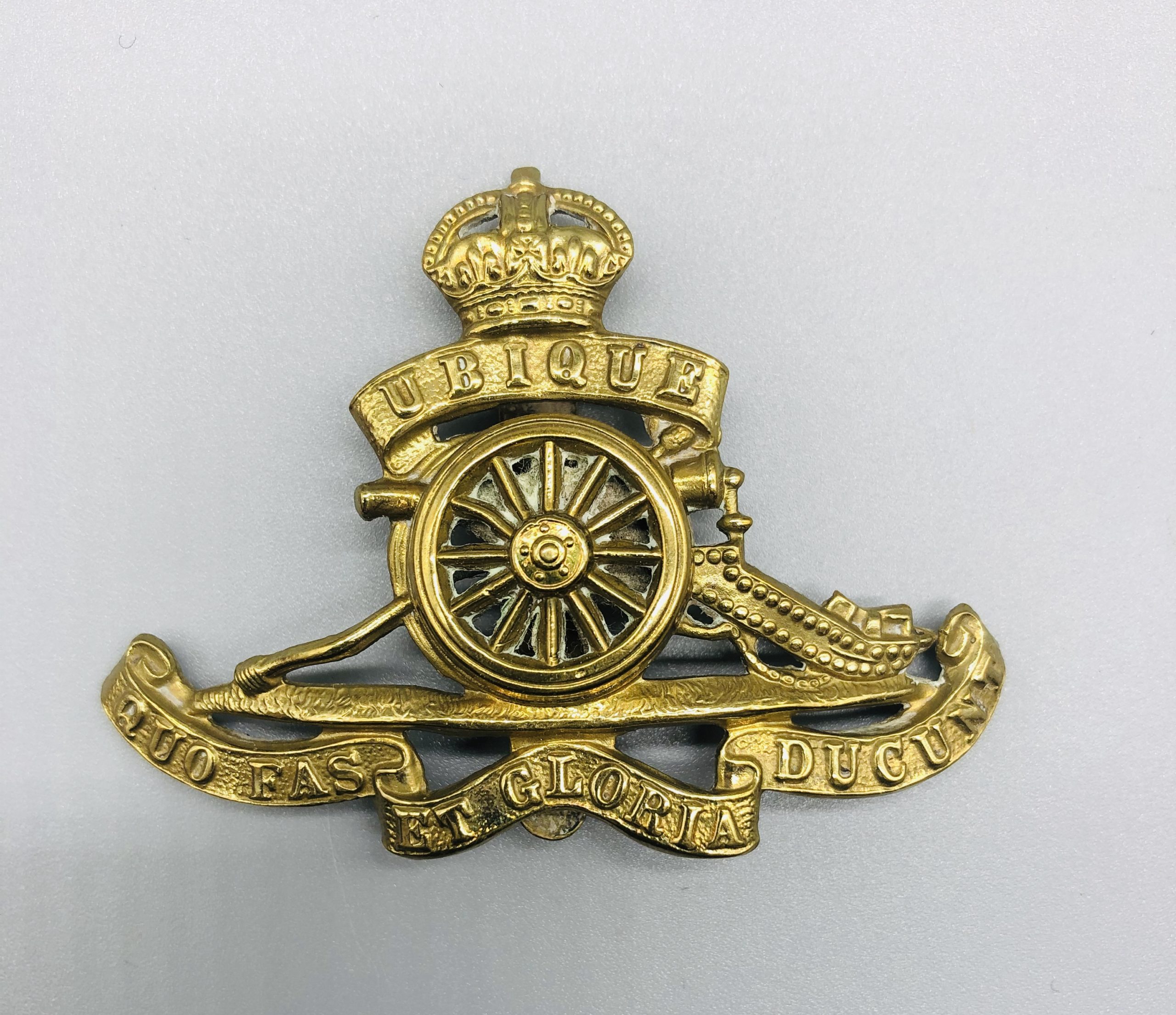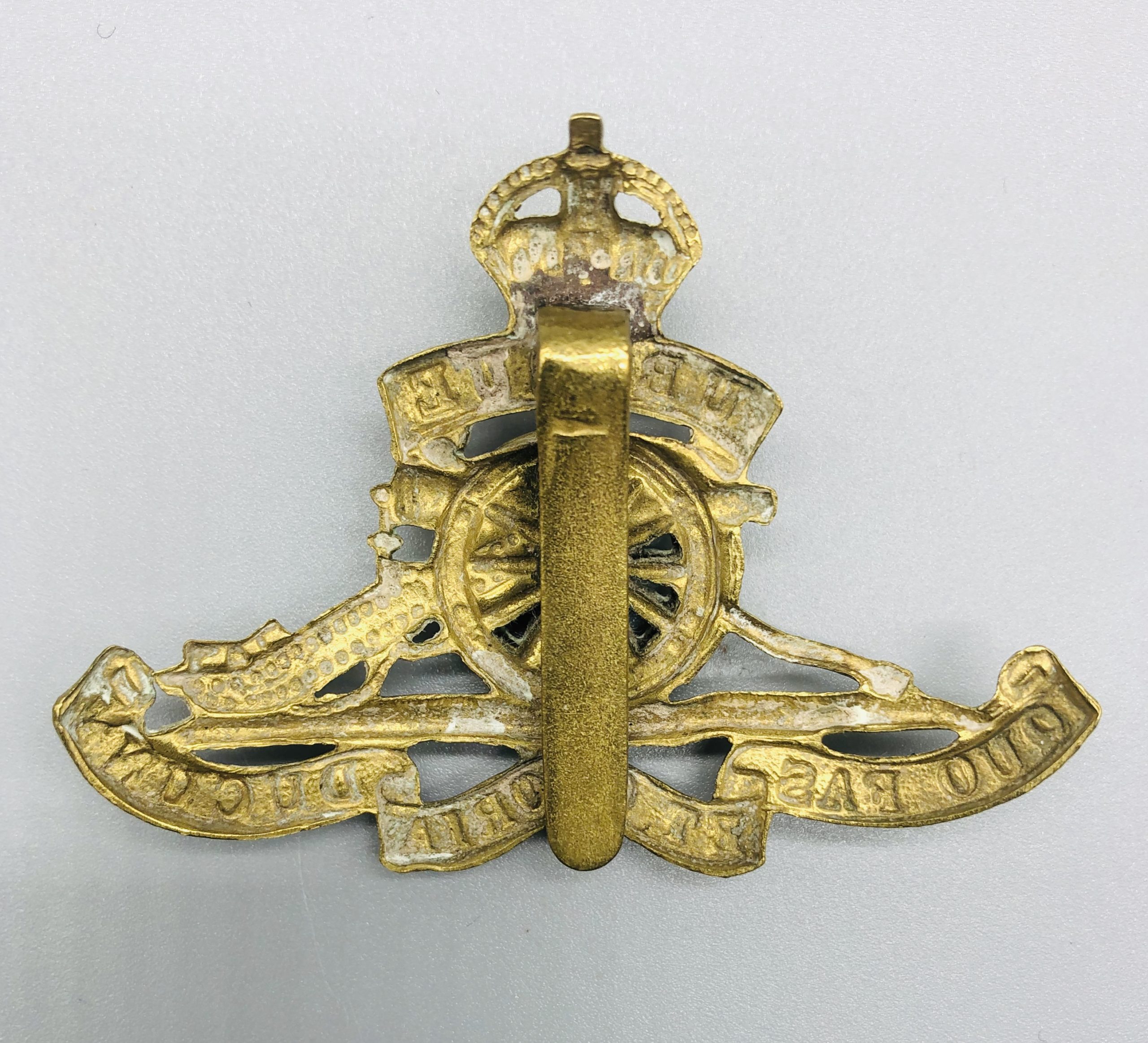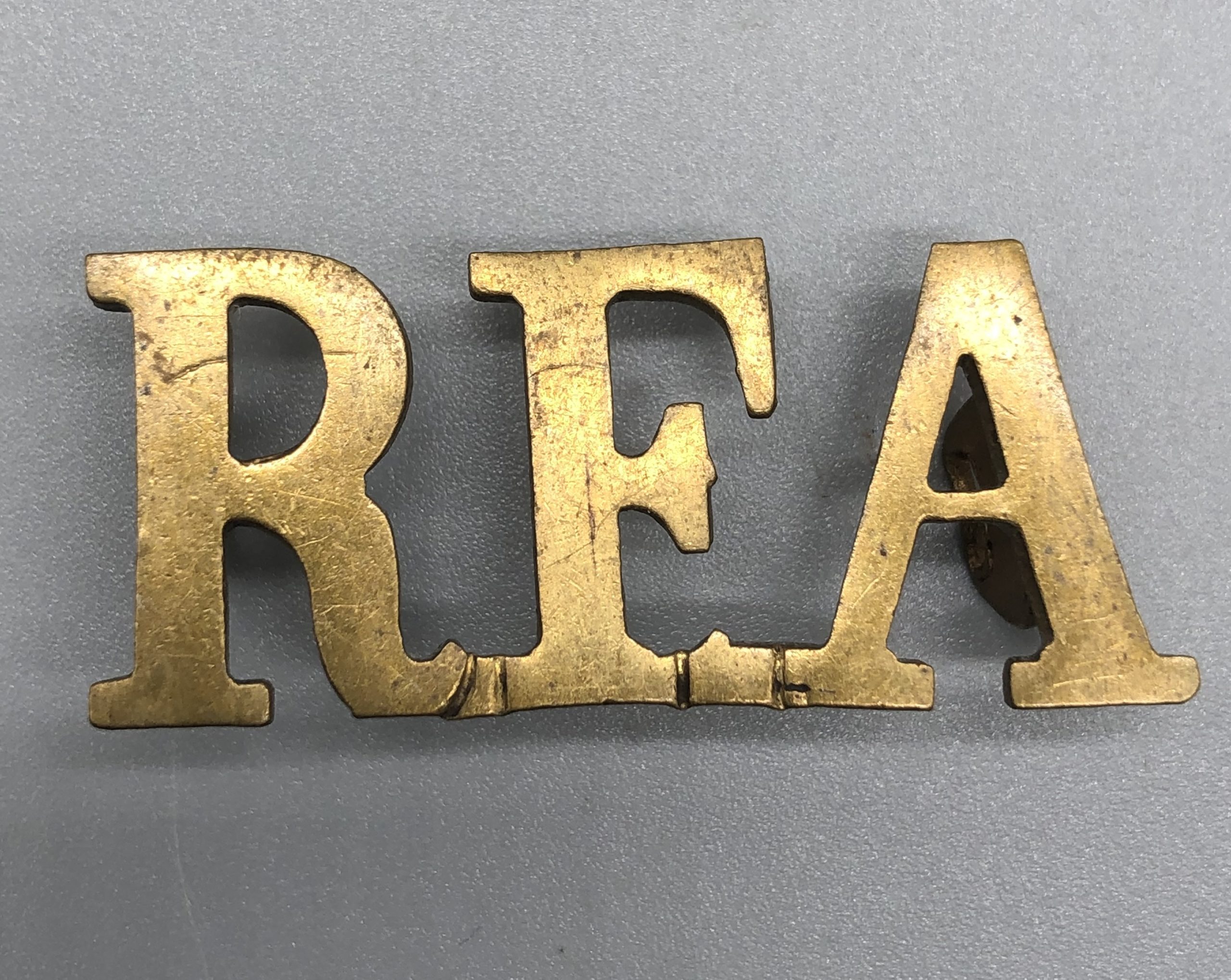Description
Royal Field Artillery Cap Badge
The regimental cap badge of the Royal Field Artillery depicts a muzzle-loading gun on ground facing left, a rammer resting against the wheel, above is a scroll bearing UBIQUE (Everywhere), surmounted by Imperial King’s crown.
Below is an elaborate scroll bearing the title QUO FAS ET GLORIA DUCUNT (Where faith and glory lead).
Brief History
At the end of the 19th century The Royal Artillery was divided into Garrison and Field Artillery. The Royal Field Artillery was then divided into: Horse batteries, Field batteries and Mountain batteries.
The Royal Horse Artillery is dealt with under a separate section. The field batteries were numbered 1-103 and had their depot at Woolwich. A battery was commanded by a major with a captain as 2nd in command. It was divided into 2 or 3 sections each commanded by a lieutenant and consisting of a detachment of two guns.
The field batteries were stationed around Britain, 2 or 3 being garrisoned together under a lieutenant-colonel. In a war situation 3 batteries would form a brigade division and added to an infantry division.
There were ten Mountain batteries (numbered 1-10) and they served in India. Their uniform was the same as that of the Field Artillery except for their lace boots and gaiters which were brown instead of black
The Royal Field Artillery provided artillery support for the British Army. It came into being when the Royal Artillery was divided on 1 July 1899, it was reamalgamated back into the Royal Artillery in 1924.
The Royal Field Artillery was the largest arm of the artillery. It was responsible for the medium calibre guns and howitzers deployed close to the front line and was reasonably mobile. It was organised into brigades, attached to divisions or higher formations.
During the First World War a whole new form of artillery was developed to meet the unusual conditions of war on the Western Front: the trench mortar. The lighter weapons being manned by the infantry, the Royal Field Artillery provided the manpower for the heavier mortars.







